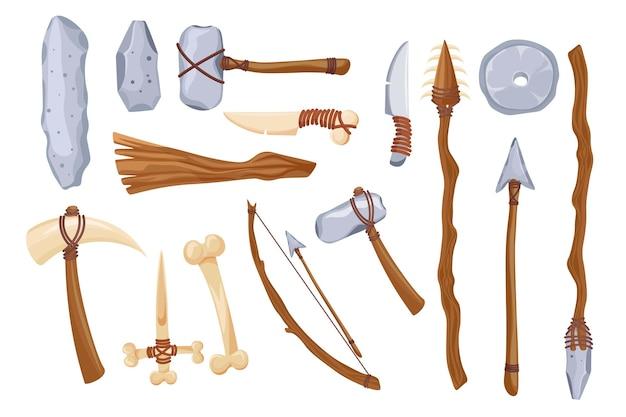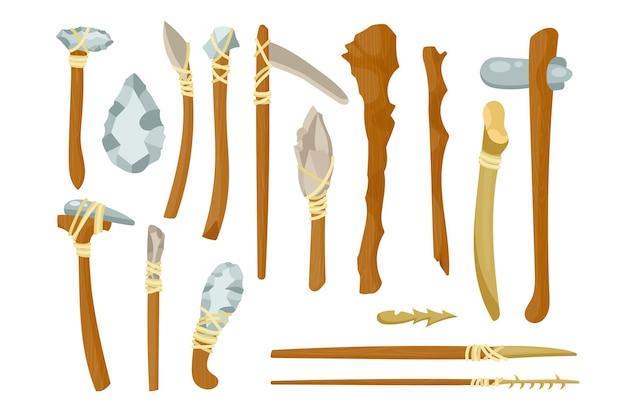The Paleolithic Age, also known as the Old Stone Age, and the Neolithic Age, or the New Stone Age, mark significant periods in the evolution of human civilization. During these times, our ancestors went through immense transformations, not only in terms of their lifestyle and culture but also in the way they earned a living. In this blog post, we will explore the intriguing differences between the jobs and occupations of people in the Neolithic and Paleolithic Ages.
From hunting and gathering to farming and agriculture, the transition from the Paleolithic to the Neolithic Age brought about substantial changes in the means through which early humans sustained themselves. Gone were the days of exclusively relying on hunting for survival; instead, people began to settle down, cultivate crops, and domesticate animals. This shift in lifestyle undeniably resulted in new roles, specialization, and advancements that shaped the course of human history.
Stay tuned as we delve into the details of the main occupations of the Neolithic Age and compare them to the jobs held during the Paleolithic Age. From the making of tools and weapons to the greatest achievements of early humans in the Old Stone Age, we will explore how our ancestors adapted and thrived in their ever-changing environment.

In what ways were the jobs that people had in the Neolithic age different from the jobs that people had in the Paleolithic Age
The Transformation of Work in Human History
When it comes to the evolution of jobs, the Neolithic Age marked a significant shift from the Paleolithic Age. Let’s explore the striking differences between the types of work people engaged in during these two distinct periods.
Settlements and Development of Agriculture
The Birth of Farming and Domestication
The Neolithic Age witnessed a groundbreaking change: the transition from a nomadic lifestyle to settled communities. With the discovery of agriculture, people started to cultivate crops and rear livestock instead of relying solely on hunting and gathering.
Farming: Tilling the Soil
In the Paleolithic Age, people were hunter-gatherers, constantly on the move in search of food. In contrast, in the Neolithic Age, the advent of agriculture meant that farming became a prominent occupation. People started to cultivate crops like wheat, barley, and millet, tending to their fields and learning the art of farming.
Animal Husbandry: From Hunters to Shepherds
Another significant shift occurred in the way people interacted with animals. In the Paleolithic Age, humans were primarily hunters, relying on wild animals for sustenance. However, in the Neolithic Age, animal husbandry became essential. People began to domesticate animals like goats, sheep, and cattle, establishing a symbiotic relationship with them.
Specialization of Labor and Crafts
Crafting a New World
As settlements grew in size and complexity, the Neolithic Age brought about the rise of specialized crafts and trades. This was a far cry from the Paleolithic Age, where survival depended on individuals being Jacks (or Jills) of all trades.
Pottery: From Clay to Creativity
One of the most notable advancements was the invention of pottery. In the Neolithic Age, potters emerged, shaping and firing clay to create functional vessels for everyday use. Gone were the days of relying on rudimentary tools carved from stone, replaced by the artistry and functionality of ceramics.
Textile Production: Weaving Wonders
With settled communities came the demand for clothing and textiles. In the Neolithic Age, skilled individuals took up the art of weaving, transforming raw materials like flax and wool into fabrics. No longer did people have to rely solely on animal skins for warmth and protection.
Social Organization and Specialized Roles
From Equality to Hierarchy
The new dynamics of settled life led to the emergence of social hierarchies in the Neolithic Age. Unlike the relatively egalitarian Paleolithic communities, where everyone had similar roles, job specialization became essential for the smooth functioning of growing settlements.
Leadership and Administration
As settlements grew larger, the need for leaders and administrators arose. In the Neolithic Age, individuals with skills in organization and decision-making took on roles such as community leaders, chiefs, or even early forms of government officials.
Religious Roles: Shamans and Rituals
Religion and spirituality played a significant role in both the Paleolithic and Neolithic ages. However, in the Neolithic Age, as communities became more settled and structured, the role of religious practitioners, such as shamans, became more defined. They held ceremonies, performed rituals, and acted as intermediaries between the community and the divine.
The transition from the Paleolithic Age to the Neolithic Age brought about drastic changes in the types of jobs people had. Settled life, agricultural practices, specialized crafts, and the rise of social hierarchies reshaped human societies. From hunting and gathering to farming and craftsmanship, our ancestors adapted to the changing world, paving the way for the civilization and complexities we see today.

FAQ: In what ways were the jobs that people had in the Neolithic age different from the jobs that people had in the Paleolithic Age
What was humankind’s “first weapon”
Ah, the age-old question! You might expect me to say something dramatic like a laser sword or a lightning bolt, but let’s take a trip back to a time before the internet, before even the written word. In the Paleolithic Age, our ancestors had to make do with what nature provided. Their first weapons were simple but effective: sharp rocks, or what I like to call “Mother Nature’s Swiss Army Knife.”
In what ways were the jobs that people had in the Neolithic age different from the jobs that people had in the Paleolithic Age
Ah, the evolution of employment! It’s like comparing a stubborn cave bear to a domesticated dog that can fetch your spear for you. In the Neolithic Age, we saw a shift from a hunter-gatherer society to a more settled agricultural lifestyle. This meant that people had to trade in their hunting gear for farm tools and their nomadic ways for a more settled existence.
What is the main occupation of the Neolithic Age
Welcome to the Neolithic job fair! In this era, the main gig in town was farming and herding. Our ancestors became experts in tending to their flocks of sheep, goats, and maybe even the occasional dinosaur. The art of cultivation also sprouted during this time, with people learning the ancient secrets of planting and harvesting crops like grains and vegetables. It was a true agricultural revolution!
Which stone is the best for making weapons
Now, this is a question that could start a real stone-age debate! Different stones had their merits, just like superhero gadgets. But if we had to pick the crown jewel of stone weapons, it would be flint. This rock had a knack for being able to shape into sharp tools and was highly prized for its ability to ignite a fire. It’s like the Neolithic version of a Swiss Army Knife — versatile and handy!
At what age did a human polish tools and weapons
Ah, the art of grooming, prehistoric style! Young Paleolithic humans might’ve been a bit rough around the edges, but they started picking up the polishing skills as they got older. It’s believed that around the age of 8 or 9, they began learning the delicate craft of sharpening and polishing their tools and weapons, ensuring that they could hunt, gather, and survive in the wild.
What was the greatest achievement of early humans during the Old Stone Age
Ah, the glory days of the Old Stone Age, when our ancestors were the true MVPs of humanity! Their greatest achievement was, without a doubt, their ability to adapt and survive in a world that would make even the most seasoned survival expert break a sweat. Despite facing harsh weather, dangerous predators, and probably a few angry saber-toothed tigers, they managed to lay the foundation for our civilization. They were the original inventors, explorers, and hunters, paving the way for the thriving societies we have today.
And there you have it, my prehistoric pals! A comprehensive FAQ-style guide to the fascinating differences between the jobs in the Neolithic and Paleolithic Ages. So next time someone asks you about our ancient ancestors, you can impress them with your newfound knowledge. Stay curious, stay historical, and remember, we stand on the shoulders of those who survived on mammoths and ingenuity!
